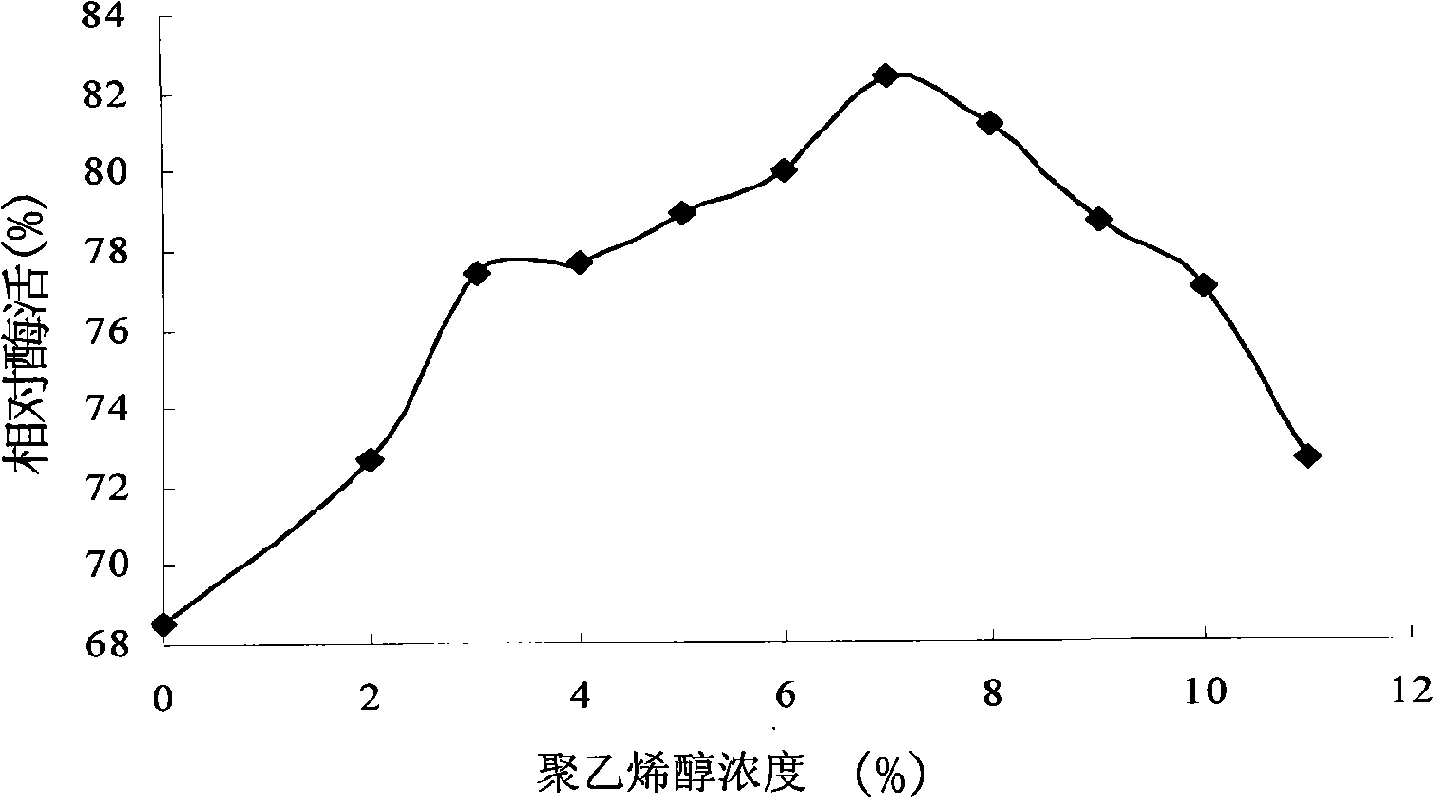Method for fixing nitrile hydratase strain by sodium alginate-polyvinyl alcohol
A technology of nitrile hydratase bacteria and sodium alginate, which is applied in the direction of fixing on/in the organic carrier, which can solve the problems of large loss of enzyme activity and few reaction batches
- Summary
- Abstract
- Description
- Claims
- Application Information
AI Technical Summary
Problems solved by technology
Method used
Image
Examples
specific Embodiment approach 1
[0008] Specific embodiment one: the method for sodium alginate-polyvinyl alcohol immobilization nitrile hydratase bacterial strain in the present embodiment is as follows: one, the sodium alginate that mass concentration is 3.0%-4%, mass concentration is 6%-9% Mix polyvinyl alcohol, nitrile hydratase bacterial suspension with a concentration of 50000cfu / ml to 80000cfu / ml, diatomaceous earth and activated carbon, and then drop the mixed solution into CaCl with a mass concentration of 3.5%-8%. 2 In the saturated boric acid solution, obtain pellets with a diameter of 3 to 4 mm, then solidify the pellets at a temperature of 4°C for 24 hours, and then filter out the pellets; Cross-linking in a glutaraldehyde solution below 2% for 20 minutes to obtain sodium alginate-polyvinyl alcohol immobilized pellets; wherein the concentration of nitrile hydratase bacteria suspension and mass The volume ratio of sodium alginate with a concentration of 3.0%-4% is 1:10-30, the nitrile hydratase ba...
specific Embodiment approach 2
[0012] Embodiment 2: This embodiment differs from Embodiment 1 in that the mass concentration of sodium alginate described in step 1 is 3.5%. Others are the same as in the first embodiment.
specific Embodiment approach 3
[0013] Specific embodiment three: the difference between this embodiment and specific embodiment one is that the concentration in step one is the volume of the nitrile hydratase bacterial suspension with a concentration of 50000cfu / ml~80000cfu / ml and the sodium alginate with a mass concentration of 3.0%-4%. The ratio is 1:11-28. Others are the same as in the first embodiment.
PUM
 Login to View More
Login to View More Abstract
Description
Claims
Application Information
 Login to View More
Login to View More - R&D
- Intellectual Property
- Life Sciences
- Materials
- Tech Scout
- Unparalleled Data Quality
- Higher Quality Content
- 60% Fewer Hallucinations
Browse by: Latest US Patents, China's latest patents, Technical Efficacy Thesaurus, Application Domain, Technology Topic, Popular Technical Reports.
© 2025 PatSnap. All rights reserved.Legal|Privacy policy|Modern Slavery Act Transparency Statement|Sitemap|About US| Contact US: help@patsnap.com



